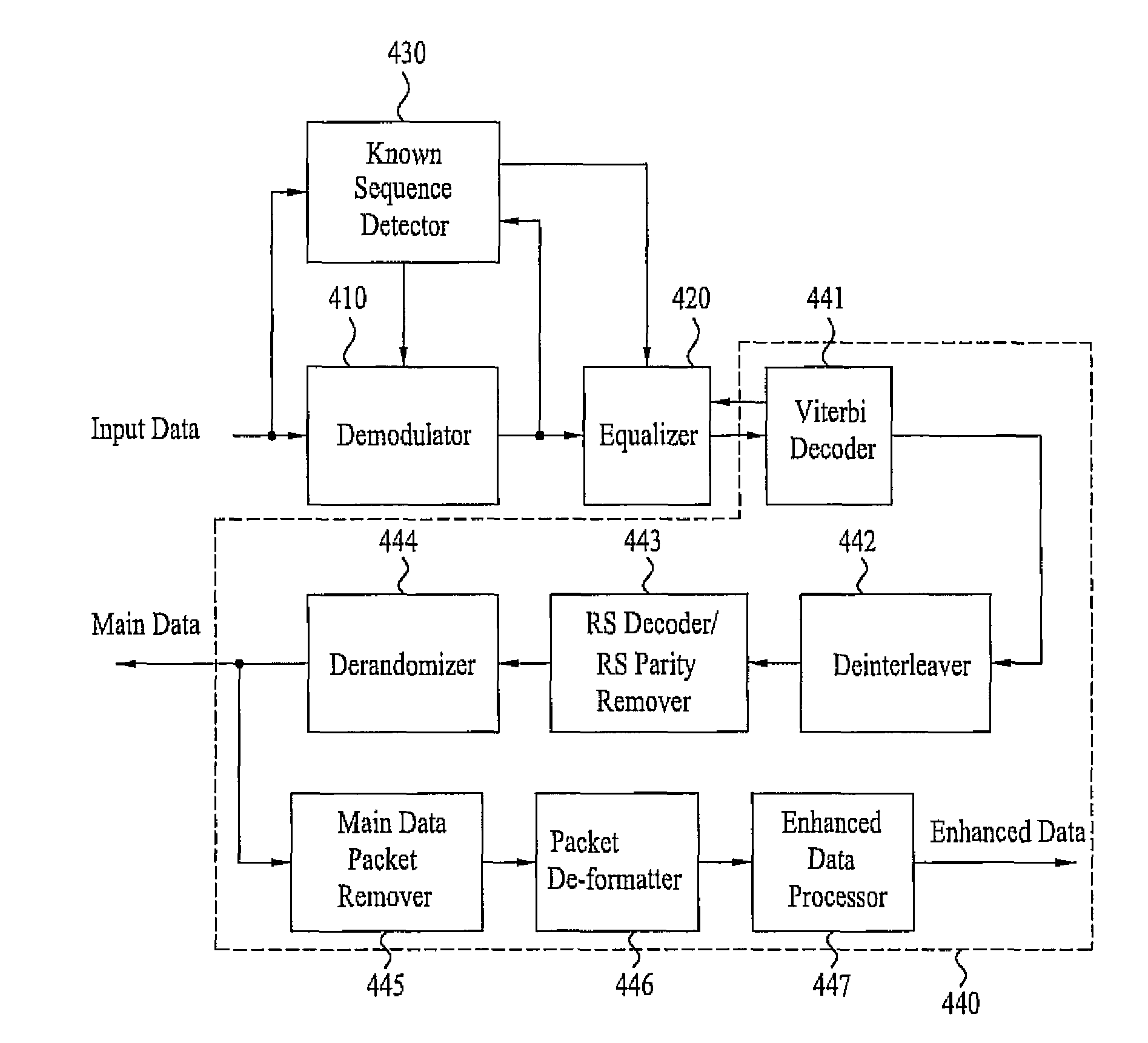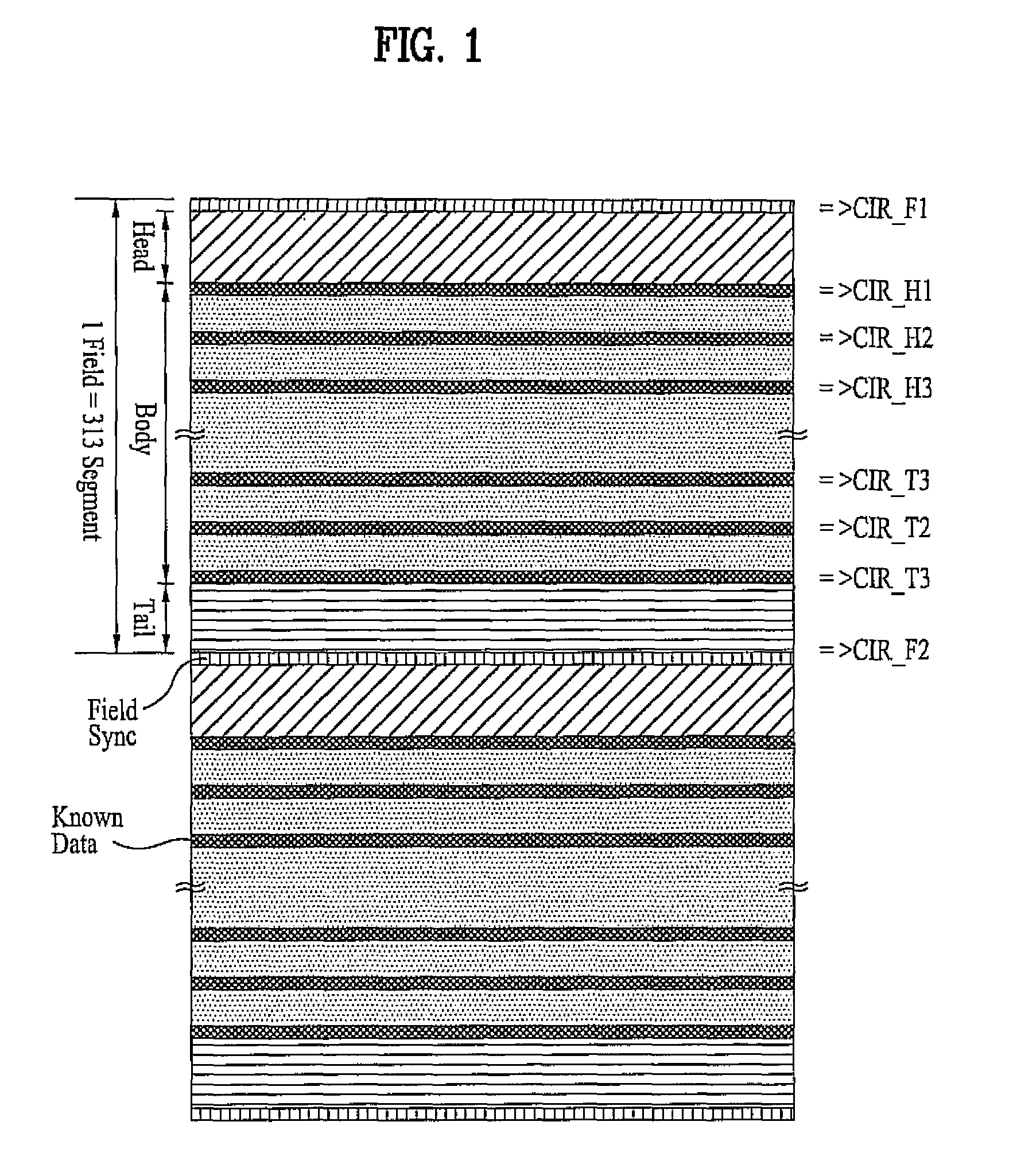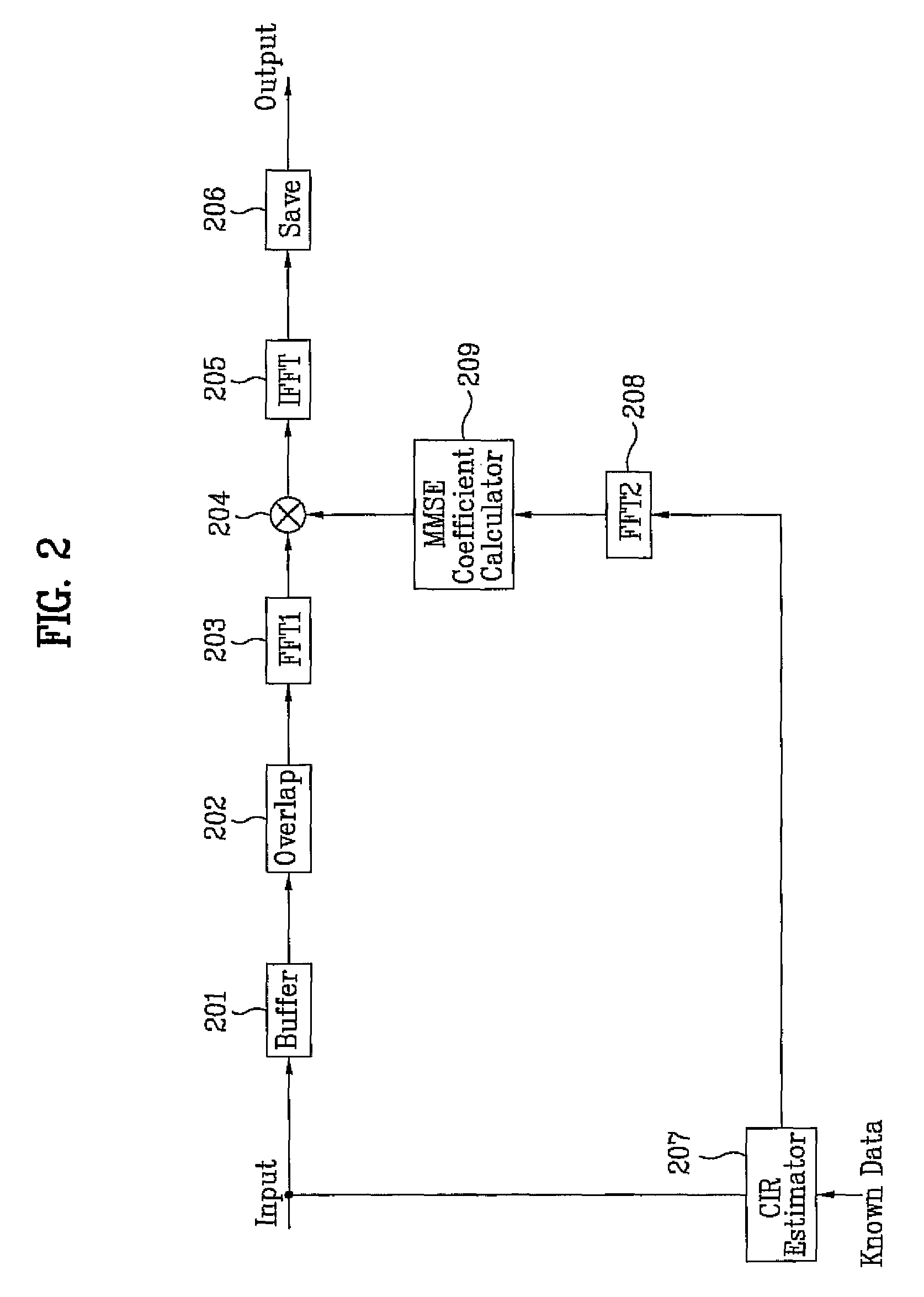Channel equalizer and method of processing broadcast signal in receiving system
a technology of receiving system and equalizer, which is applied in the field of digital telecommunications system, can solve the problems of data quality that is to be reduced, and data that is to be transmitted should have a low error ratio, so as to achieve the effect of enhancing channel equalization performan
- Summary
- Abstract
- Description
- Claims
- Application Information
AI Technical Summary
Benefits of technology
Problems solved by technology
Method used
Image
Examples
first embodiment
[0033]The first embodiment of the present invention relates to directly copying the CIR estimated from the body area and using the copied CIR for the channel equalization process in the head / tail areas. More specifically, when the head / tail areas and the body area are assumed to be similar to one another due to non-frequent channel change based upon a predetermined time interval, the CIR of the body area may be directly used (i.e., without modification) in the head / tail areas adjacent to the corresponding body area. For example, in order to perform the channel equalization process in the head area, the CIR estimated from the body area adjacent to the corresponding head area may be used. And, in order to perform the channel equalization process in the tail area, the CIR estimated from the body area adjacent to the corresponding tail area may be used.
[0034]FIG. 2 illustrates a block diagram showing an example of the channel equalizer using such method (or such CIR) according to the fi...
second embodiment
[0038]The second embodiment of the present invention relates to performing extrapolation on the CIR of the body area so as to use the extrapolated CIR for the channel equalization of the head / tail areas. Herein, when a value F(A) of a function F(x) at a particular point A and a value F(B) of the function F(x) at another particular point B are known, an extrapolation refers to estimating a function value of a point outside of the section between points A and B.
[0039]FIG. 3 illustrates an example of an extrapolation operation. Particularly, FIG. 3 illustrates the simplest form of linear extrapolation among a wide range of extrapolation operations. More specifically, since the values F(A) and F(B) each from points A and B, respectively, are known, a straight line passing between the A-B section may be obtained so as to calculate an approximate value {circumflex over (F)}(C) of the F(x) function at point C. Herein, the equation of the straight line passing the coordinates (A,F(A)) and (...
third embodiment
[0052]The third embodiment of the present invention relates to performing interpolation on the CIR of the body area and the CIR estimated by using field synchronization data so as to estimate a CIR, which is then used to perform channel equalization of the head / tail areas. More specifically, as shown in FIG. 1, a set of field synchronization data for synchronization recovery of a frame having the length of a segment is included in each field of the transmitted frame, which is transmitted from the transmitting system. In the present invention, the field synchronization data may be used to calculate the CIR. Then, interpolation is performed on the CIR obtained from the body area and the CIR obtained from the field synchronization section, thereby enabling the CIR of the head / tails area to be estimated. Herein, when a value F(A) of a function F(x) at a particular point A and a value F(B) of the function F(x) at another particular point B are known, an interpolation refers to estimating...
PUM
 Login to View More
Login to View More Abstract
Description
Claims
Application Information
 Login to View More
Login to View More - R&D
- Intellectual Property
- Life Sciences
- Materials
- Tech Scout
- Unparalleled Data Quality
- Higher Quality Content
- 60% Fewer Hallucinations
Browse by: Latest US Patents, China's latest patents, Technical Efficacy Thesaurus, Application Domain, Technology Topic, Popular Technical Reports.
© 2025 PatSnap. All rights reserved.Legal|Privacy policy|Modern Slavery Act Transparency Statement|Sitemap|About US| Contact US: help@patsnap.com



